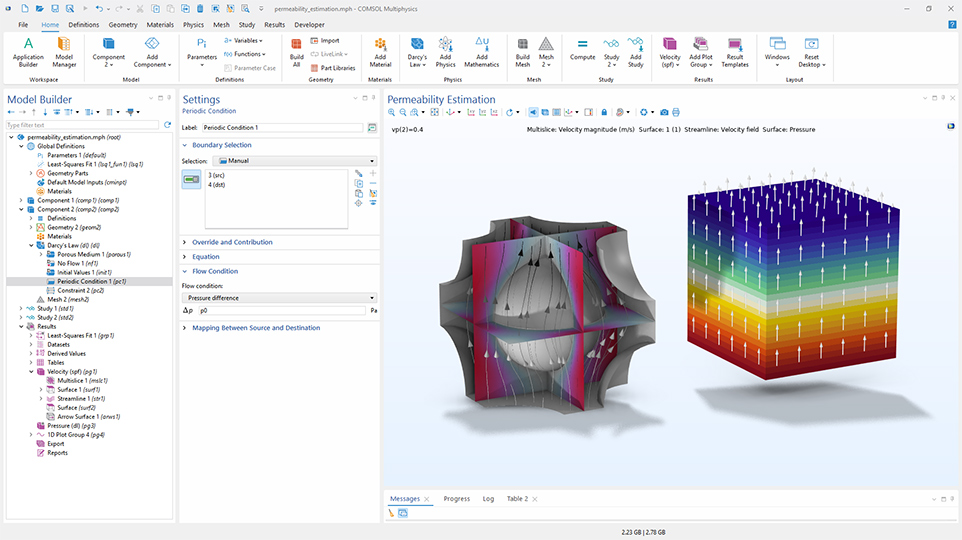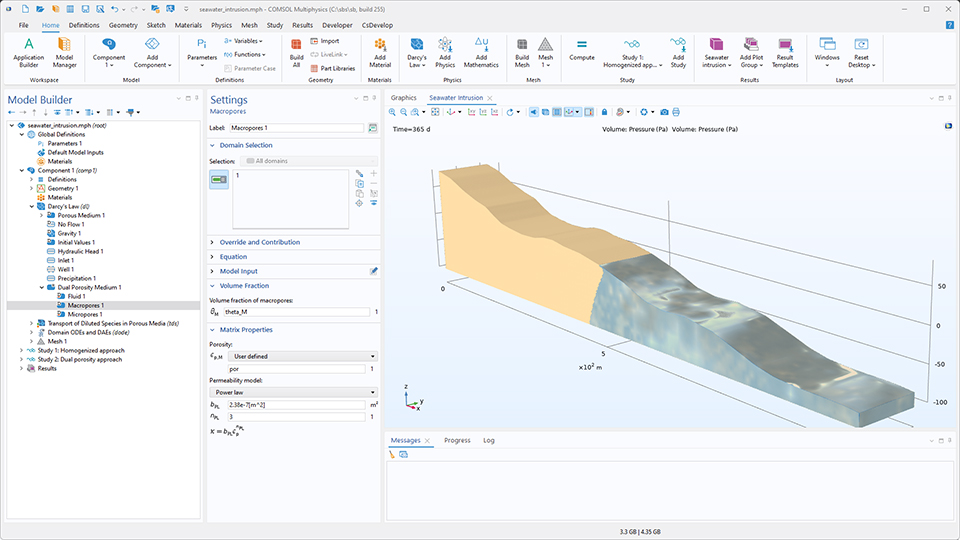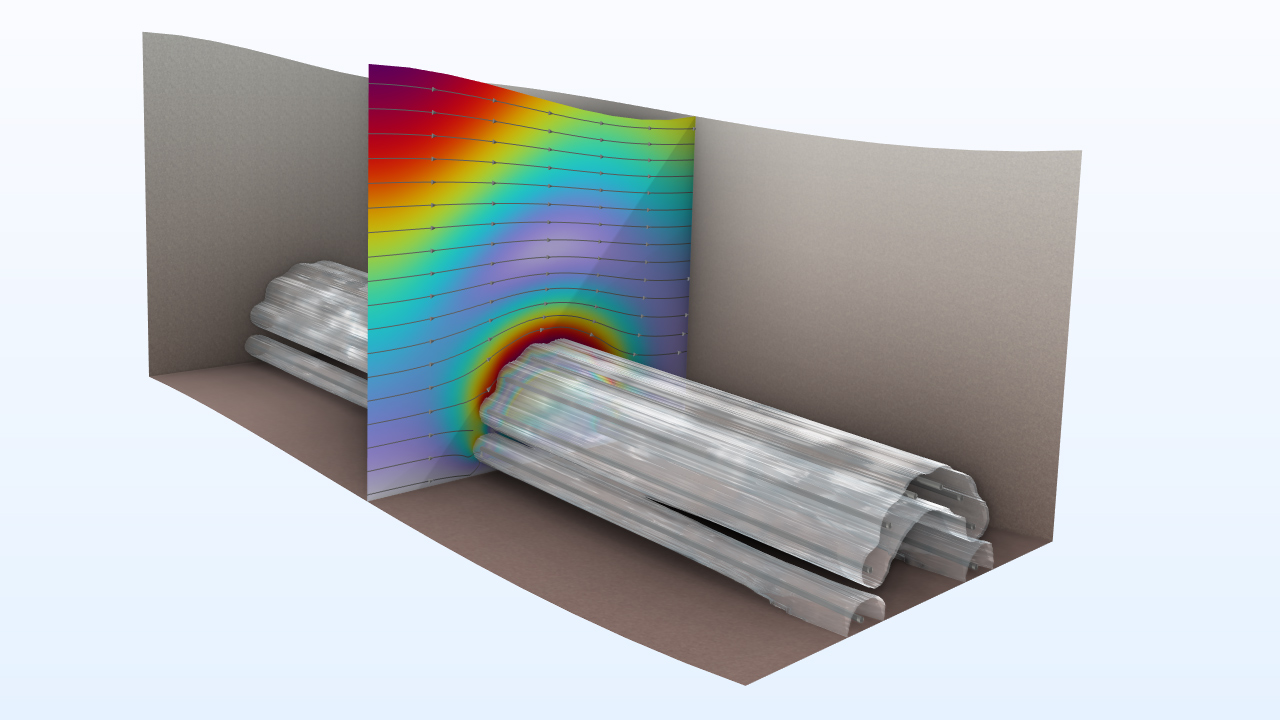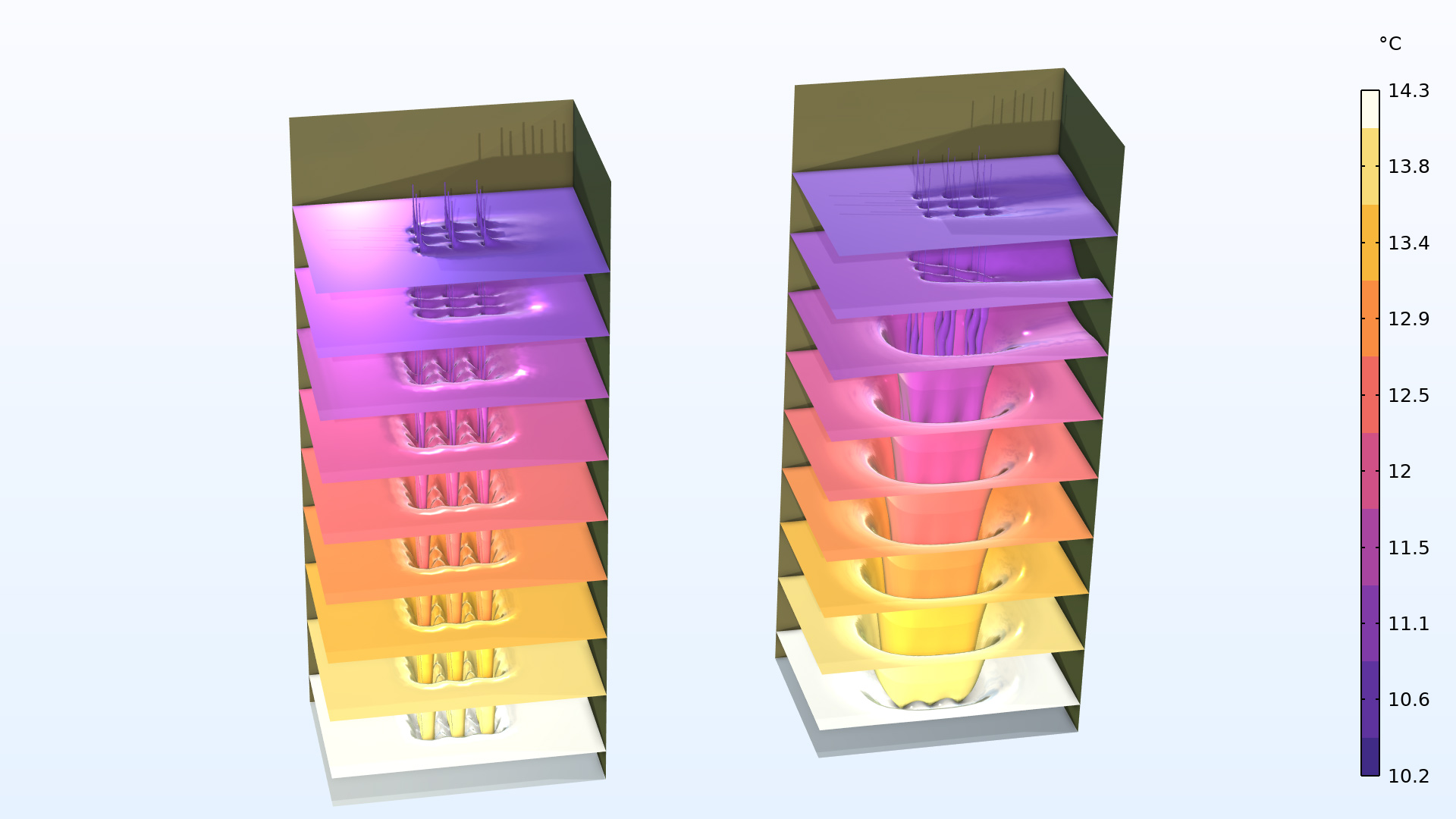Subsurface Flow Module Updates
For users of the Subsurface Flow Module, COMSOL Multiphysics® version 6.4 introduces a new feature to specify periodicity between two or more boundaries, a new permeability model, a new option in the Free and Porous Media Flow Coupling feature to include a pressure jump across the free–porous boundary. Learn more about these updates below.
Periodic Condition
A new Periodic Condition feature has been added to the Darcy's Law and Richards' Equation interfaces to easily enforce periodicity for the flow between two or more boundaries. In addition, it is possible to create a pressure difference between source and destination boundaries, either by specifying the pressure jump directly or by prescribing a mass flow. The model Estimating Permeability from Microscale Porous Structures showcases this new feature. The periodic condition is typically used to model representative volume elements and compute effective properties for use in homogenized porous media.

Power Law Permeability Model
For reservoir and groundwater simulations, the new Power law permeability model can be used to capture the nonlinear dependence between porosity and permeability. This model estimates permeability as a function of porosity using a power-law relationship. Try out this functionality in the Estimating Permeability from Microscale Porous Structures and Seawater Intrusion in a Coastal Aquifer tutorial models.
Pressure Jump Option for the Free and Porous Media Flow Coupling
The Free and Porous Media Flow Coupling has a new option to include a pressure jump across the free–porous boundary. This makes it possible to model, as examples, the osmotic pressure at a semipermeable membrane supported by a porous spacer material or a pressure jump due to capillary pressure in the case of multiphase flow. The Reverse Osmosis Water Desalination tutorial model demonstrates this new option.

New and Updated Models
COMSOL Multiphysics® version 6.4 brings new and updated tutorial models to the Subsurface Flow Module.



